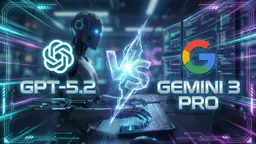What is Video SDK?
Video SDK, short for Video Software Development Kit, is a comprehensive suite of tools, libraries, and documentation designed to empower developers in creating immersive video experiences within their web and mobile applications. By providing a robust framework for implementing features such as video conferencing, live streaming, and in-app video functionalities, Video SDK significantly reduces the complexity and time associated with developing these capabilities from scratch.
The primary advantages of Video SDK lie in its ease of integration, scalability, and extensive customization options. These qualities make it an ideal choice for a wide range of applications across various sectors. Developers can swiftly implement sophisticated video solutions, enhancing user engagement and ensuring high-quality video performance without getting entangled in the intricacies of video technology.
As businesses increasingly recognize the value of incorporating live video experiences into their platforms, Video SDKs have become indispensable tools. They facilitate richer user interactions and foster collaboration, making them a crucial component in the modern developer's toolkit.

Features of Video SDK
Video SDK stands out with its impressive array of features designed to meet the diverse needs of developers and end-users alike. Let's delve into some of its key offerings:
- Real-Time Communication: At its core, Video SDK enables the development of applications supporting instantaneous audio and video communication. This feature is particularly crucial for sectors like telehealth, online education, and remote collaboration, where real-time interaction is paramount.
- Interactive Live Streaming: Video SDK facilitates high-quality, low-latency live streaming, complete with interactive elements such as chat and Q&A functionalities. This feature is invaluable for hosting engaging events, webinars, and online classes.
- Real-Time Transcription: The SDK offers on-the-fly transcription of conversations, converting speech to text during meetings or calls. This feature enhances accessibility and documentation, ensuring that critical discussions are captured for future reference.
- Customizable UI Components: Developers can leverage pre-built UI components for quick setup while retaining the flexibility to customize these elements to align with their application's branding and design. This balance between convenience and customization helps in delivering a cohesive user experience.
- Security Compliance: Video SDK prioritizes security, implementing robust measures such as AES-256 encryption and ensuring compliance with standards like HIPAA and GDPR. This focus on security is crucial for applications handling sensitive information, providing reassurance to both developers and users.
How Does Video SDK Work?
Video SDK operates as a powerful intermediary, bridging the gap between complex video technologies and user-friendly applications. It provides developers with the necessary tools to integrate real-time audio and video capabilities across various platforms seamlessly.
In the context of the artificial intelligence industry, Video SDK enhances user interactions through advanced AI functionalities. Its real-time speech and vision capabilities enable AI characters to engage in natural conversations, understand visual cues, and execute tasks based on user intent. The SDK's support for multilingual communication breaks down language barriers, expanding accessibility and reach.
Moreover, Video SDK's adaptive reasoning and conversation memory features allow AI characters to personalize interactions, leading to more meaningful and engaging user experiences. The integration of advanced OCR processing and intent-based task automation capabilities empowers businesses to streamline operations and enhance customer service.
Benefits of Video SDK
The adoption of Video SDK offers numerous advantages for developers and businesses alike:
- Ease of Integration: Video SDK's pre-built tools and libraries significantly simplify the development process, allowing for quick embedding of video features.
- Scalability: Designed to handle varying user loads, Video SDK is suitable for applications ranging from small group calls to large-scale webinars with thousands of participants.
- High-Quality Video Conferencing: The SDK ensures superior video quality and low latency, enhancing the overall user experience.
- Customization Options: Developers can tailor the appearance and functionality of video features to meet specific needs and brand requirements.
- Collaborative Tools: Built-in features like chat, polls, and whiteboards enrich user interactions during video sessions.
- Compliance and Privacy: Robust support for standards such as HIPAA and GDPR ensures that applications meet regulatory requirements while delivering exceptional video experiences.
Alternatives to Video SDK
While Video SDK offers a comprehensive solution, several alternatives are available in the market:
- Vonage Video API: Vonage Video API simplifies the integration of custom video experiences into applications using WebRTC technology, supporting high-quality video calls with robust security features.
- Twilio Video: Offers extensive communication APIs, though it's worth noting that Twilio has announced the sunsetting of its video SDK.
- api.video: api.video empowers developers to deliver live streaming capabilities quickly with a fully customizable API that supports adaptive video playback and extensive integration options.
- EnableX: Focuses on security and developer ease, offering a comprehensive suite of communication APIs.
- Daily.co: Delivers a simple API for video calls and real-time communications, ideal for straightforward video solutions.
Each alternative comes with unique features and pricing structures, allowing developers to choose based on their specific needs and application requirements.
In conclusion, Video SDK emerges as a powerful tool in the realm of real-time communication, offering a rich set of features, seamless integration, and the flexibility to cater to diverse application needs. As the demand for high-quality video experiences continues to grow across industries, solutions like Video SDK will play a crucial role in shaping the future of digital communication and collaboration.




